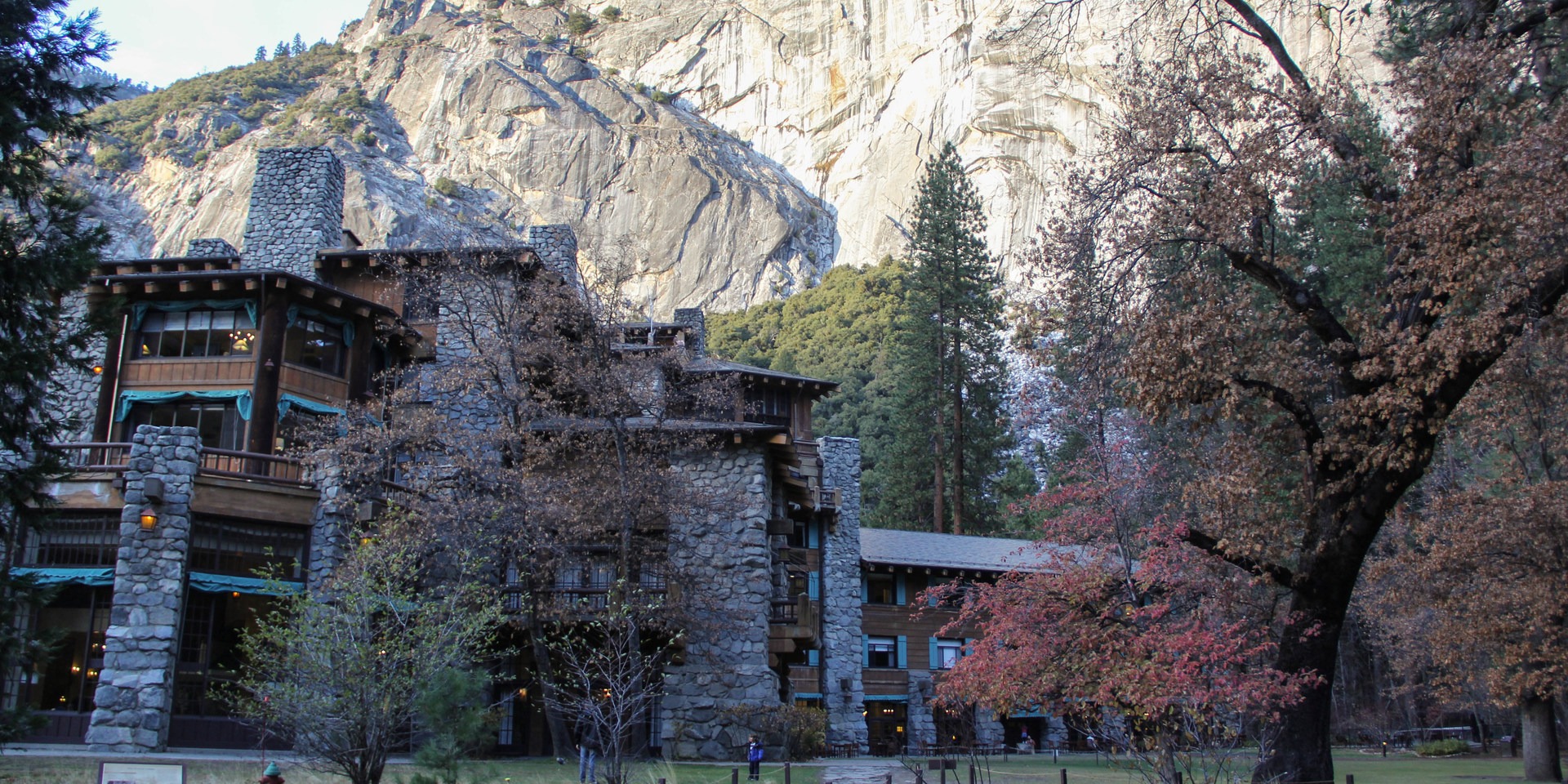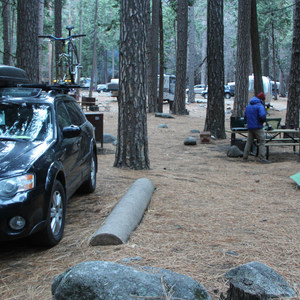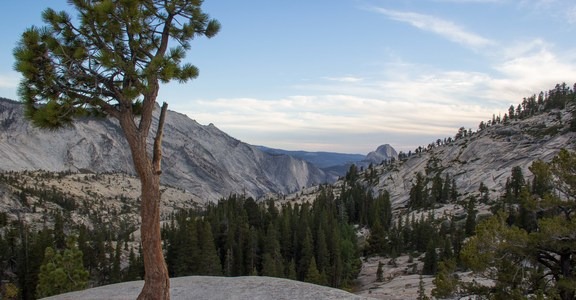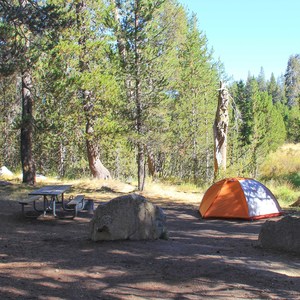The Ahwahnee Hotel in Yosemite National Park is often called the queen of national park lodges. Named after the Miwok Native Americans that inhabited Yosemite Valley (“Ahwahnee” means place of gaping mouth), the hotel is arguably the grandest representation of America’s parkitecture style that is so pervasive among flagship national park structures built in the early 20th century. While the hotel itself is an architectural marvel, it is the combination of the hotel’s majestic Yosemite setting and the nature-inspired architecture that set it apart.
The Ahwahnee was designed by Architect Gilbert Stanley Underwood to attract the growing class of affluent Americans that owned cars, and construction ran from 1925 to 1927. Since then, the Ahwahnee has become an international symbol of the archetypal national park lodge, enticing guests ranging from royalty to the everyday tourist wishing to experience Yosemite in elegant style. Constructed with 5,000 tons of rough-cut granite, 1,000 tons of steel, and 30,000 feet of timber, the hotel was designed to reflect the elegant relationship between architecture and nature. After viewing the building's east facade, the parallels to the surrounding natural environment and the 3,000-foot granite walls towering above are instantly apparent. The site itself was chosen for the exceptional vistas to Half Dome, Yosemite Falls, and Glacier Point.
The interior design is a mix of natural, rustic western, and Native American themes. Notable interior spaces include the Great Lounge and the Grand Dining Room. Like most lodges, the Ahwahnee's design prioritizes cozy fires as part of the guest experience, and multiple fireplaces grace the ground floor and the Great Lounge.
As a tourism hotspot, the Ahwahnee sees a good amount of traffic in the spring and summer. If you are considering booking a room for a visit during peak season, be sure to book reservations six months to a year in advance.











Comments
Sign In and share them.